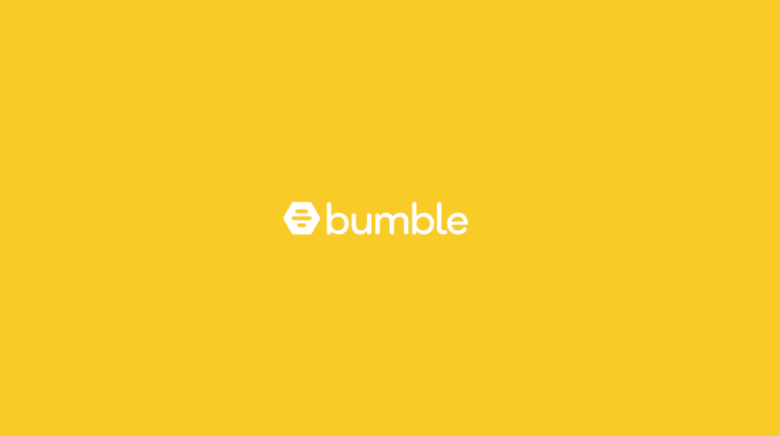Looking for love? Or just a way to meet someone and have a little adult fun? Bumble is a great way for people to connect with each other. It was actually founded by one of the women involved in the creation of Tinder, and she used a similar formula but with a twist: in male/female pairings, the women have to send the first message.
And honestly? I think a lot of men were pretty relieved. It’s an annoying and, frankly, antiquated tradition that supposes that men should always make the first move, and it pushes both men and women back into annoying and restrictive gender roles. Bumble’s strategy to get women to start the conversations can help take some of the pressure off men, because hey, if your match sends you the first message then she’s more likely to be interested. If you’re matched with people of the same gender either of you can message first. The second unique feature is the time limit: if the woman hasn’t sent a message within 24 hours, the match expires and you’re disconnected.
Sounds good? Good. If you’re looking to use Bumble, the most common way to do so is on their app, which is compatible with most smartphones. You can link it to a Facebook account or a mobile phone number, and enable your device’s location so they can find people available close by – there’s no point getting matched with someone if you live in California, USA and they live in Tokyo, Japan.
Next, you’ll need to set up a profile. There are clear instructions to guide you through everything from selecting photos (people with more than three pictures are 43% more likely to get a match, apparently) to getting your gender correct (there are three initial options: man, woman and non-binary, but then there are more choices and you can add your own if necessary) and finally, you’ll need to be clear about what you’re looking to do on Bumble. Although it’s mainly known as a dating site, there are options to help you find new platonic friends or even make Linkedin-style connections. For the purposes of this post, I’ll just be talking about dating.
You can move on to your preferences: are you interested in men, women or everyone? You’ll only be shown people who are interested in you, so if you’re a man who dates men you’ll be shown to men who date men and men who date everyone, but not men who date women. After a few short messages about the importance of being kind and respectful, your profile is established and you’re ready to go!
However if you stick to the minimal steps, your profile will probably end up being pretty boring, because it’s only got your name and a few photos. On the bottom left side of the app there’s a little silhouette which shows you your profile and allows you to add details. These can range from a short bio, interests and ‘profile prompts’ where you can tell Bumble (and therefore future matches) more about yourself. Pros and cons of dating you, for example, or what you’d do if you were president.
You can add information about your workplace and education and your opinions on children, smoking, religion or your star sign. And yes, ‘c’mon, I don’t care – skip that!’ is an option! You can also connect your Instagram and Spotify, which is great if you’re planning to fall in love with someone who loves Dolly Parton as much as you. Honestly, the more information you include here the better, really, because it’ll mean that if/when people connect with you they’ll have a few ideas for conversation starters. However, if there’s something you’d like to keep private for now don’t add it to your profile, because other users will see it.
And finally, let’s get to swiping! The icon at the bottom of your screen in the middle with the Bumble logo will show you potential matches, which you can swipe right on (to show interest and maybe make a connection), swipe left (if you don’t want to connect with this person) or scroll down to find out more information. This is where you’ll see everything they’ve included on their profile and how far away they are from you.
Like with other dating sites, there is a premium version. The most tantalising bit is the section on your messages (icon on the bottom left with a little message picture) which will show you who’s ‘liked’ you – but you have to pay (or start swiping) to see if you’re matched with them. If you do choose a ‘premium’ membership you can select how long you’d like it for. Longer periods of time are more expensive, but work out as less per day. You can either promote your profile so it’s shown to more people or you can use an ‘incognito’ mode so you’re only shown to people you’ve swiped right on. Additionally, if you accidentally swipe left on someone you meant to swipe right on (we’ve all been there) you can ‘undo’ it and get them back.
And – well, that’s it, really. Part of the reason services like Bumble have become popular is because they’re easy to use. It’s in the interest of the app to be as user-friendly as possible, and so they walk you through setting up a profile, expanding it where you like and then using the app. There are three main tabs: your profile (icon bottom right), your ‘swipe’ page (where you can view other users, icon bottom middle) and your messages (icon bottom left) where you can chat with your matches.
Bumble is a really popular dating app, and there will be lots of people for you to match with. It’s really inclusive for people of all gender identities and sexual orientations and the women-first rule is honestly one of the most simple ways to change up the boring gender-based dating conventions. If you’re looking to meet people – for a relationship, for casual hookups, or apparently even for friends, Bumble might be the right way to go. Happy swiping!



